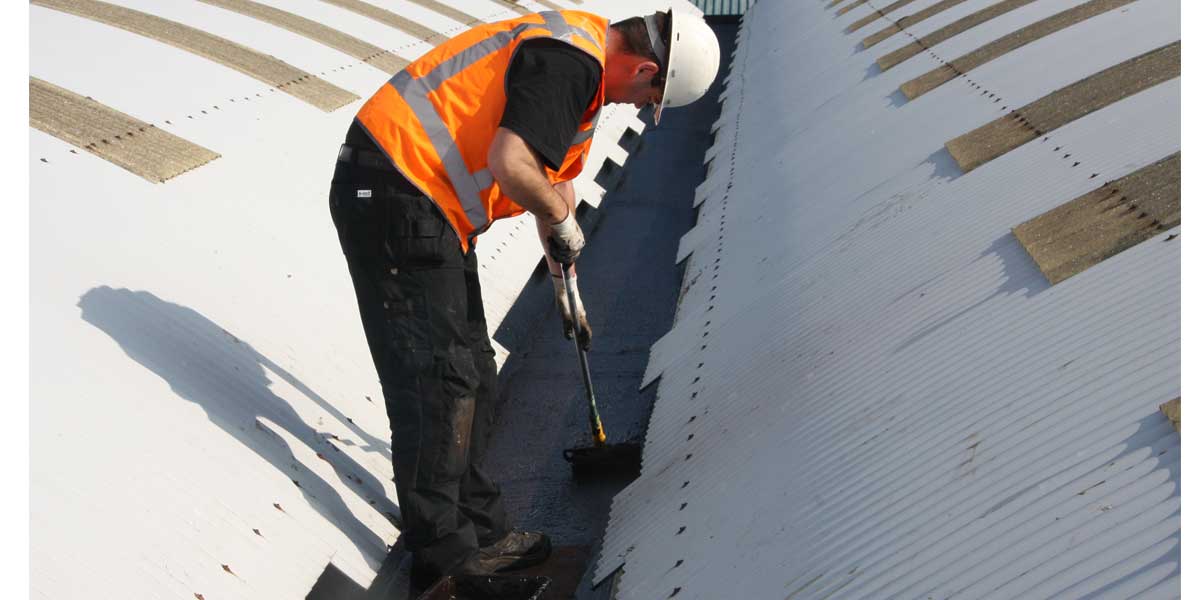

Solar heat-reflective coatings for buildings and other infrastructure can save energy and reduce the carbon footprint, AS Khanna explains the energy- and money-saving coatings and where they can be used.
________
Today, India is trying to reduce its carbon footprint by producing electricity through alternative energy, especially wind and solar power. However, it is also possible to use a simple paint coating on a rooftop to bring down the structure’s temperature, thereby consuming less power for air-conditioners or coolers.
Recently, a new kind of smart coating that can cool roofs has been developed that saves electricity and reduces the carbon footprint by reflecting about 89 per cent of the infrared (IR) heat absorbed from the sun. In addition to heat reflection, the coating also has an insulation effect. Thus, such a combination can bring down the ambient temperature in a room, say from 45oC to 37oC.
This coating can find application in various sectors in addition to housing and other structures, such as the Railways (a market of about Rs 300 crore); transportation (~ Rs 100 crore); defence, which includes warehouses, hangers and remote barracks (about Rs 400 crore) and cold storage. There are basically two types of coatings, one for concrete and the other for steel surfaces. These are cost-effective, easy to apply and durable, with a longevity of five to eight years.
Figure 1 (a) Sunlight falling on the roof; (b) breakup of solar radiation; (c) conventional cool roof coatings; and (d) principle of solar heat-reflective coatings
As seen in Figure 1b, solar radiation consists of ultraviolet (UV), visible and infrared in the ratio 5 per cent, 43 per cent and 52 per cent. By using suitable additives and pigments in normal architectural paints, it is possible to absorb all IR radiation. When this is followed by reflection of this absorbed radiation, it results in extensive cooling on the roof surface as shown in Figure 1d. In addition, it is possible to add natural fillers in the coating to provide sufficient insulation to the coating as well. Based upon this, a patented solar heat-reflective (SHR) coating was developed at IIT-Bombay. This is now available under the Thermacool coatings brand in a wide range of products for concrete and steel roofing as well as any other kind of synthetic roofing like asbestos, bitumen or ceramic tiles (see Table 1).
Table 1: Range of Thermacool solar-heat reflective coatings (www.thermacool.in)
Figure 2: Electricity saved using solar heat-reflective coating and reduction in carbon footprint
Let us calculate the savings. Figure 2 summarises how the application of the coating on a rooftop saves seven units of electricity per day for a 1-tonne AC in a 1,000 sq ft room, when run for eight hours a day. This would save Rs 314 per month. If converted to carbon units, it amounts to 4.2 kg coal per day—1,073 kg coal equivalent or 1,788.5 units of power per year. This is a tremendous saving.
Here are some case studies of application.
Figure 3: TVS showroom in Vijayawada
Figure 4: Air Force Station, Race Course Road, New Delhi
Figure 5: (left) Drop in roof temperature of Shatabdi Express (AC coach) by 24oC; (right) drop in roof temperature of Flying Rani Express (non-AC coach) by 18oC
Figure 6: Drop in roof temperature with SRH coating 0.3C
Figure 7: Temperature drop in water tank on rooftop
Figure 8: Example of temperature drop of 20oC on the roof of an AC bus with 14oC drop in ceiling temperature
Indeed, SHR coatings are a simple way to save electricity and, in turn, protect the environment. These products are eco-friendly and GRIHA-certified. Thermogreen Cool Coat Pvt Ltd is the only company with patented technology for cool roof coating and has established itself with several demonstrations across industries.
About the author: Prof AS Khanna retired from IIT-Bombay and is now Chairman, SSPC India, a professional body focusing on surface engineering. In his 27 years at IIT-Bombay, he focused his research on corrosion-related topics and surface engineering. His last PhD work was on SHR coatings, which got two patents. The technology was sold to Thermogreen Cool Coat Pvt Ltd, where is a Technical Director.